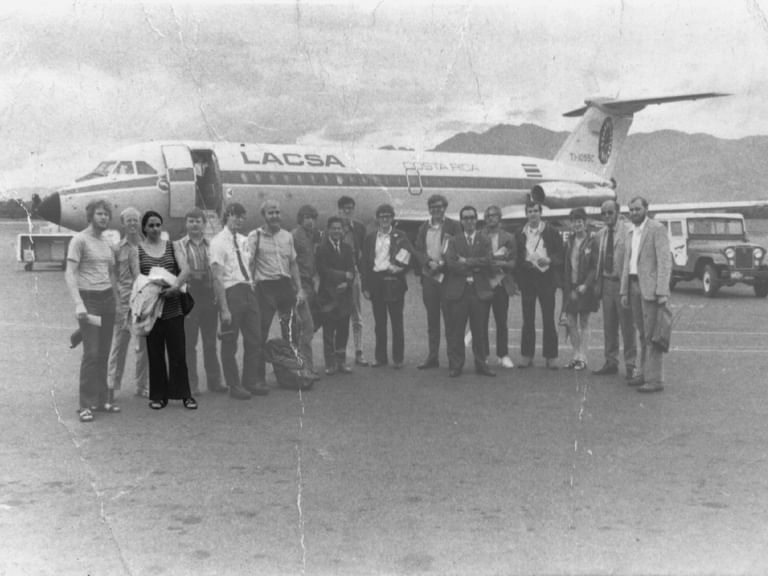50 Years after the Peace Corps
“Established by President John F. Kennedy in 1961, the agency has sent more than 240,000 volunteers to 141 nations around the world. Six decades on, its mission remains largely the same – to work with local communities to develop sustainable solutions for challenges in the healthcare, education, economic development, agriculture, and environmental sectors.”
Read more from Condé Nast Traveler as they chronicle the experience of six generations of women who served in the Peace Corps.
After graduating from the University of Illinois Urbana Champaign in 1971, Carol enlisted in the Peace Corps. “It was the seventies and we believed that we had to change the world. We had gifts that other people didn’t have, so it was just the right thing to do” says Carol.

“The challenge of today’s generation of architects is the environment. In Costa Rica, I got an early wakeup call about that.”
Carol Ross Barney, FAIA, Hon. HASLA
On assignment in Costa Rica, Carol and her husband Alan Barney (a botanist) worked for the fledgling Costa Rican National Park Service. “As an the only architect in my group, we were selected to assist the national parks system. They were already very cognizant that they had an incredibly diverse environment. The park service didn’t have a staff or a budget, so they asked the Peace Corps to send staff. My other Peace Corps group members were landscape architects, botanists, biologists, and park planners.”
The mission of the Park Service was to protect and preserve Costa Rica’s amazingly diverse and threatened ecology. Carol’s projects included a master plan for coral reef protection and interpretation at Parque Nacional Cahuita, restoration of the historic hacienda at Parque Nacional Santa Rosa and worker housing at Parque Nacional Volcan Poas.
“The challenge of today’s generation of architects is the environment. In Costa Rica, I got an early wakeup call about that. We restored environments that had been trashed by farming. In a way that’s what architects need to do. We need to restore and protect the entire system. You look at energy use in the United States and one third of it is automotive or our transportation system, one third of it is manufacturing and one third of it is buildings. That means architects are responsible for one third of energy by their designs. So not only is it dire, it’s also something that we can do.”
Carol’s embrace of sustainability is inspired by her time in the Peace Corps and has informed the foundation and ethos of Ross Barney Architects. No matter the scope or scale, each project explores an inventive and integrated approach to stewardship, whether that be to its neighbors or the environment; anything less is not an option.”